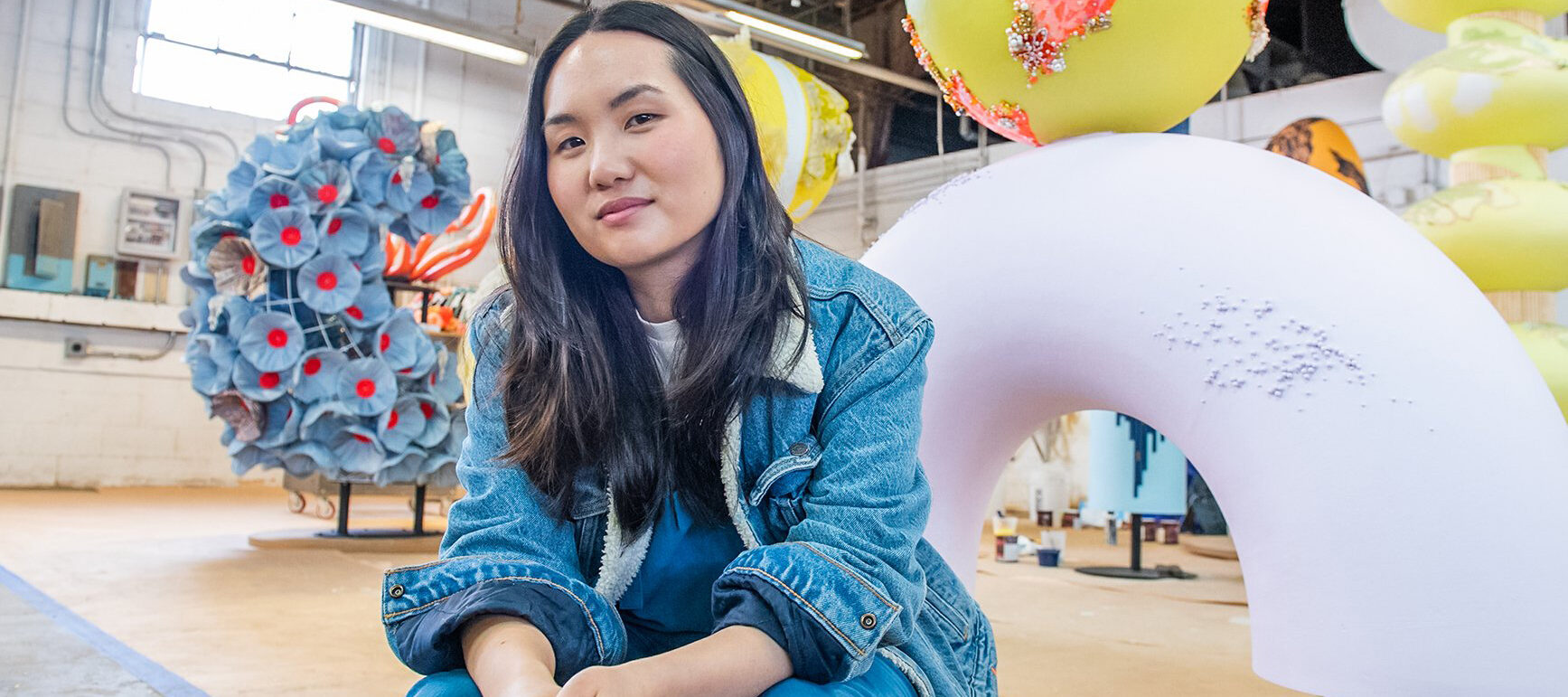The seventh installment of NMWA’s Women to Watch exhibition series, New Worlds, is presented by the museum with the integral partnership of our national and international outreach committees.
The exhibition showcases 28 contemporary artists who respond to our extraordinary times—the global pandemic, advocacy for social reform, and political division—by reimagining the past, presenting alternate realities, and inspiring audiences to create different futures. We spoke with some of the participating artists about their featured work and practice.
Artist: Amanda Phingbodhipakkiya
Nominating Committee: New York Committee
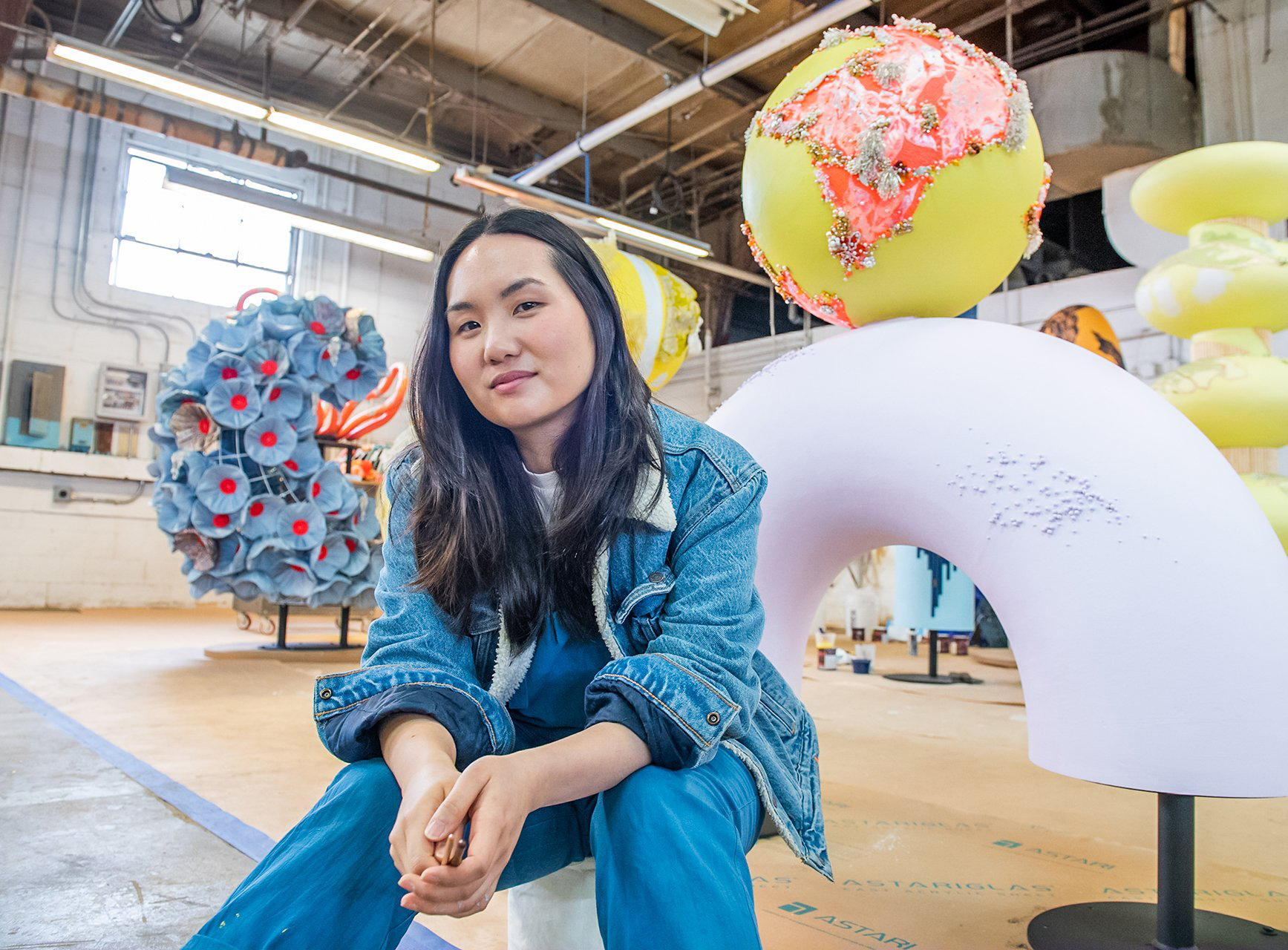
1. What themes does your work in New Worlds address?
the primitive sign of wanting (2024) emerged from my desire to open a portal between reckonings of the past and possibilities of tomorrow. I assembled this ancient-future oracle from discarded artifacts and remnants of human life to open spaces of unburdening, care, and imagination.
The work’s title references British philosopher Elizabeth Anscombe’s assertion that ethical living requires evaluating both intention and outcome. As material, biomedical, and artificial intelligence technologies grow ever intertwined with human life, Anscombe’s thesis takes on new urgency.
This work asks questions that resist easy answers: What is justifiable in the face of climate catastrophe? Could our food become a drug delivery mechanism? Can embryos consent to genetic modification? Who will technology serve—and who will it subjugate?
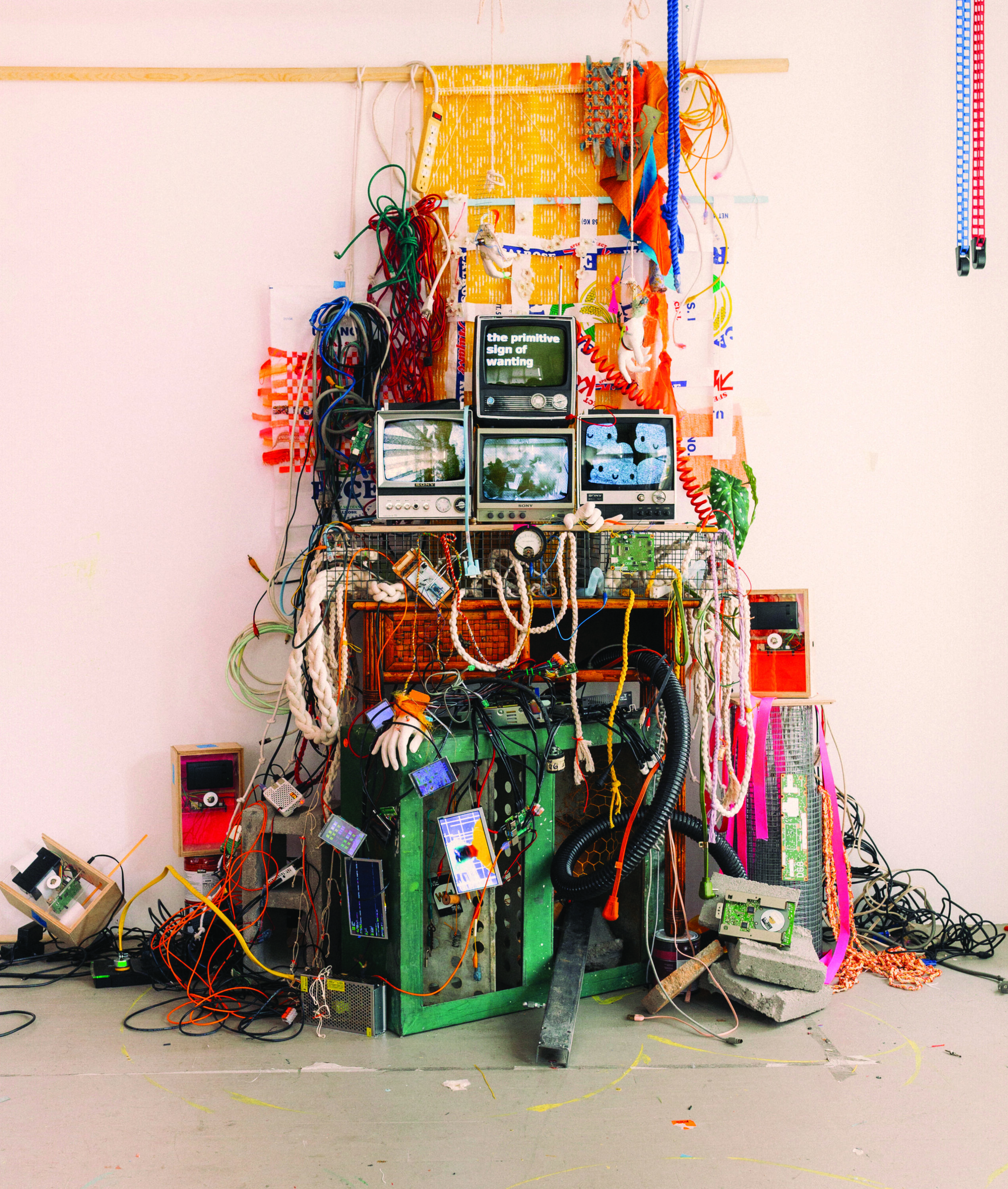
2. Is this work representative of your oeuvre? How does it fit into your larger body of work?
Portals to new worlds are a core aspect of my practice. The living monuments I construct are declarations of hope, manifestations of care, and archives of resistance in the fight for a more equitable society.
This sculpture pulls on the same threads of my oeuvre that assert we must reckon with our past to redefine our shared futures. It similarly unearths nuanced narratives and perspectives that help audiences consider their place in the world and their responsibility to sustain it.
In our daily lives we are exposed to interactive feeds that feel agentic yet ultimately funnel us toward content that will engage, enrage, and entertain us. In this work, each narrative seemingly offers a path to technological salvation from our societal ills, yet it instead funnels us through journeys of consciousness that force us to contend with our choices and their consequences.
3. As an artist, what are your essential materials and/or tools for building a new world?
So much of the escalating conflict in our world is due to our global deficit of compassion. To meet anger with curiosity and hatred with understanding is the only way to build sustainable ecosystems of reciprocity. My practice helps us break out of vicious cycles of strife and serves as a lens to see each other and the world in a new light.
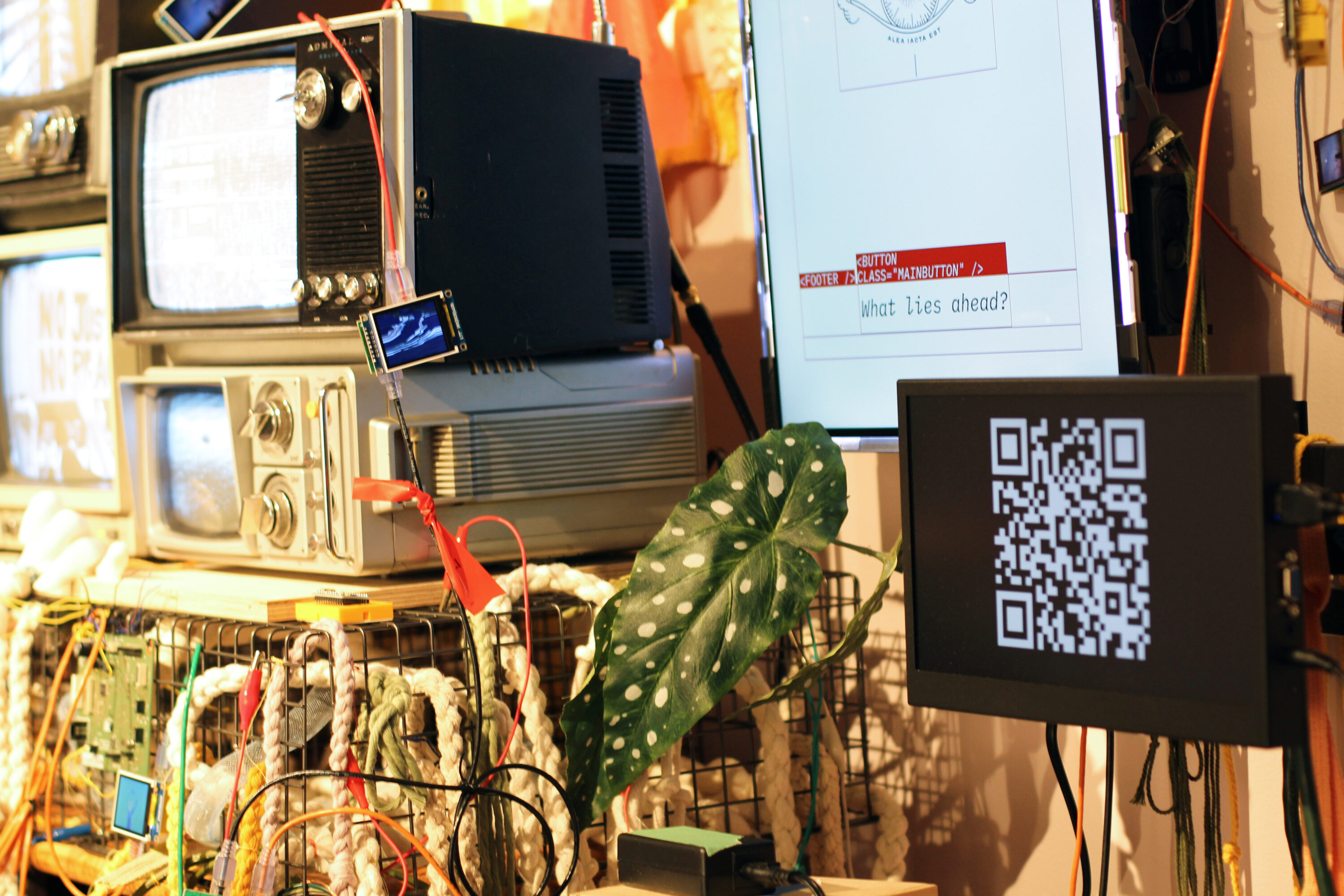
4. Did any books, music, film, news, or other art inform your work in this exhibition?
I found resonance in the profound words of James Baldwin and Bell Hooks. Baldwin’s assertion, “If I love you, I have to make you conscious of the things you don’t see,” echoes deeply in my approach. Hooks’s call to action to “undermine all the socialization that leads us to behave in ways that perpetuate domination” reverberates throughout my work.
Drawing inspiration from the storytelling mastery of Hayao Miyazaki, I sought to emulate the complexity of his characters and narratives. Miyazaki’s resistance to simplistic dichotomies of good and evil informed the journeys of awakening woven into the fabric of this oracle. Just as Miyazaki’s tales defy easy categorization, so too does the primitive sign of wanting.
5. How have the events of the past several years—the global pandemic, increased advocacy for social reform, and striking political division—changed or challenged your practice?
The global increase in anti-Asian sentiment and hate crimes against Asian Americans at the height of the pandemic spurred me to act with urgency and fight for my community. My work thrust me into the public sphere as I created works of resistance and courage as well as spaces for communal healing and unburdening.
The past few years have laid bare the inequities of our society and the indifference that too many bystanders carry in their hearts. I create work that demands to be seen so that my message may reach unwilling ears and unconcerned hearts.
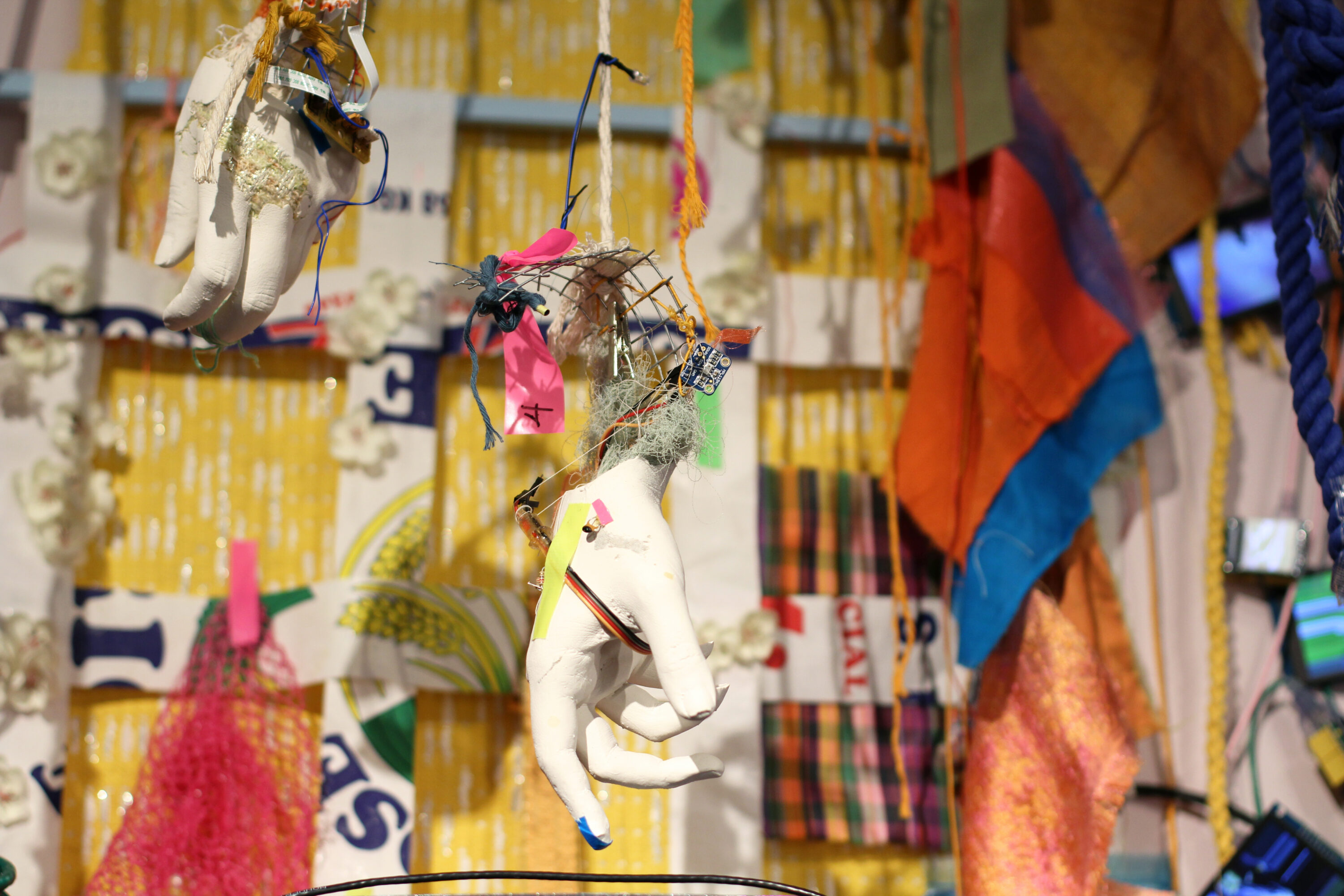
6. If you could travel to any time, past or future, where would you go? Why?
I would go back and visit the foremothers who have shaped our world. I would visit the glamorous Marsha P. Johnson as she planned the first gay pride march in the wake of the Stonewall Uprising. I would sit with Maxine Hong Kingston in that lonely hotel north of Oahu as she wrote the pages that would become The Woman Warrior (1989). I would go on long walks with Faith Ringold in the 1980s, after the contemporary art world turned its back on her, to talk about the importance of resistance and resilience.
New Worlds: Women to Watch 2024 is on view at the National Museum of Women in the Arts from April 14 to August 11, 2024.
